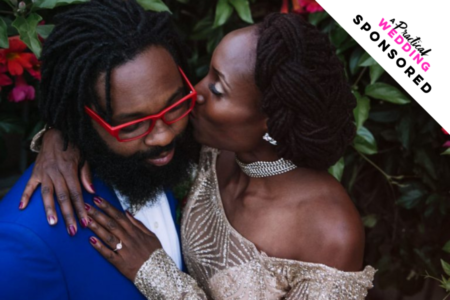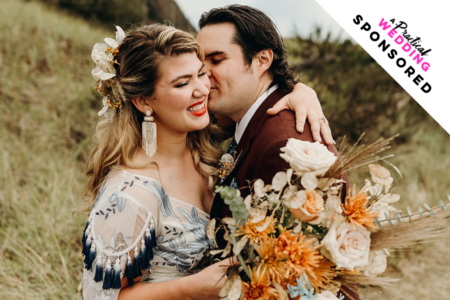One of the most fascinating aspects of wedding celebrations is just how different they can be based on the region of the United States. After you’ve seen enough magazines and pins, you can tell who’s in Los Angeles and who’s in Connecticut, without even reading the captions. And when it comes to the South, they like their weddings serene and lush, with Gone with the Wind sophistication and charm. And one of the quintessential wedding locations for a Southern couple is a plantation, right?
Actually, no. It’s absolutely not. Or at least it shouldn’t be, given the depth of the horror seeped into every fiber of those places. Choosing to celebrate your love, your hope for the future, and the beginning of your new life on the grounds of a plantation is bizarre at best, but the word I’d really use for it is horrifying. This is certainly not a new classification for the plantation wedding, but maybe given the garbage fire of 2017, and the wokeness that has emerged, it’ll finally start to stick.
Unmarked Graves At The Cocktail Hour
If you grew up in the United States, or just have a loose understanding of the basics of American history, you know how a good number of African-Americans ended up here: slavery. Many ended up in the southern states, where a warm climate and lots of space made it a great place to claim hundreds (or thousands) of acres, and amass wealth from sugar, tobacco, cotton, and more. Seriously, there was a lot of space—thousands of plantations existed in the American south in the Antebellum era. But the thing is, all of those moneymaking crops were also brutally labor intensive. So if you were a Southern white man in 1860 with over five hundred acres of land and a lot of work to do, you most likely bought slaves. This was the aspirational lifestyle of the era: ownership of both massive amounts of land and people. Typically, historians classify sites that had over 20 slaves as plantations, but many plantation owners owned over two hundred. Yep, over two hundred people that they purchased, often breaking families apart, and forced to work on their property while brutally abusing them, systematically raping them, and just barely keeping them alive. And when they died, guess where their bones ended up? Under that garden where you’re thinking of having cocktail hour.
Slavery Is As Recent As Your Dinner Table
So, yes, you knew that slaves worked in fields and slept in tiny sheds. But it’s also important to know that many slaves died while completing this unpaid labor, or as a result of being whipped for looking at white people “wrong,” or during childbirth following brutal sexual assault and rape committed by white men on the property. Of course, you’d be hard-pressed to find anyone who has firsthand slavery experiences to describe, but at the same time it’s important to note that slavery was really not very long ago. Remember 12 Years a Slave? The story of Solomon Northrup, who was born free in the North, abducted, then sold into slavery in the South? He regained his freedom in 1853 and died in 1863. If you’re around thirty, your grandparents were likely born in the mid 1900s. And if they’re still living, you can probably get them to tell you a story about their grandparents at your holiday dinner. And there it is: you’ve reached an Antebellum-era memory.
The History of Slavery Is Now
Historically, we aren’t very far removed from the era of active plantations, and the effects of slavery persist. No, having a black president for eight years does not mean that we are done with racism or living with full racial equality in America. Based on a recent study, it would take the average black household over two hundred years to amass the same amount of wealth as the average white household. Two hundred years! And there are so many questions you can ask yourself, with answers that’ll send you right back to institutional racism. Why, in so many metropolitan areas, are there majority-white neighborhoods that are known as “good” and majority-black neighborhoods that are somehow “bad?” How, in 2017, are schools more segregated than ever? Why are so many black men in prison, often serving years-long sentences for nonviolent crimes that earn white offenders a slap on the wrist? How are there so few black men and women serving as C-level executives for major corporations, when there are so many of us in the corporate world and the country overall? Black Americans are still trying to recover from the effects of slavery, followed by the Jim Crow era, followed by redlining, and the list goes on. Again, if you’re in your thirties, one of your parents is probably around the same age as Ruby Bridges—who bravely marched into a previously all-white Louisiana school as a six-year-old in 1960. And if you catch them in the right moment, they can probably tell you about what living through the Civil Rights era was like.
No, Not All Historic Sites Are Alike
Okay, I know what you’re going to say: it’s hard to find a spot that’s completely devoid of negative history! Of course it is. You can really reach and say that there’s bad history anywhere that anyone was ever abused, or died. But here is the question that you need to pose to yourself: as a non-Nazi, would you get married at Auschwitz, and take portraits by the crematorium because the flowers in the field there are so beautiful? This question reads as completely alarming, as an obvious, “No!” but the closest comparison to a plantation is a concentration camp. Pretty columns and gauzy Southern “heritage” aside, a plantation was not a site of accidental death or benevolent caretakers. It was a site of systematic torture, rape, and murder. That “wedding venue” you’re considering? It was physically built by slaves. Slaves who were whipped to death during the construction process. It was inhabited by slaves. Slaves that were consistently raped by their owners, and forced to give birth to children of their rapists, while tending to the needs of their rapists’ families. And many of those slaves died, of natural and non-natural deaths. Infants and children along with adults. And their bodies are buried all over the property, in thousands of unmarked graves.
Why? So that a white family could build wealth from agriculture. The quick and easy explanation of the Southern Plantation Complex: black people died so that white people could profit. And now, generational wealth allows so many white couples to add plantations with expensive rental fees to their “must visit” wedding venue lists.
PLANTATIONS ARE NOT THE MOVE
There are certainly areas where literally the only farm-like options are plantations. I’m not totally sold on the once-plantation, now-farm venues myself, but it’s worth mentioning them. There are properties out there that loudly reject the original purpose of their land and structures, and make some effort to support organizations that center African-Americans. But in my mind, no amount of peonies, lace, tin mint julep cups, blush bridesmaid gowns, and laughter, can erase the brutal, painful history of the plantation itself.
If you’re still on the fence, I suggest looking into the Whitney Plantation for the authentic plantation experience. It’s brutal, but it’s real. Yes, you want a beautiful, luxurious Southern wedding. I get it! In fact, I plan weddings for a living. But trust me, it is absolutely, one hundred percent worth searching for an opulent mansion with a beautiful garden that won’t call your respect for history and your friends’ ancestors into question. Go for the good vibes.







